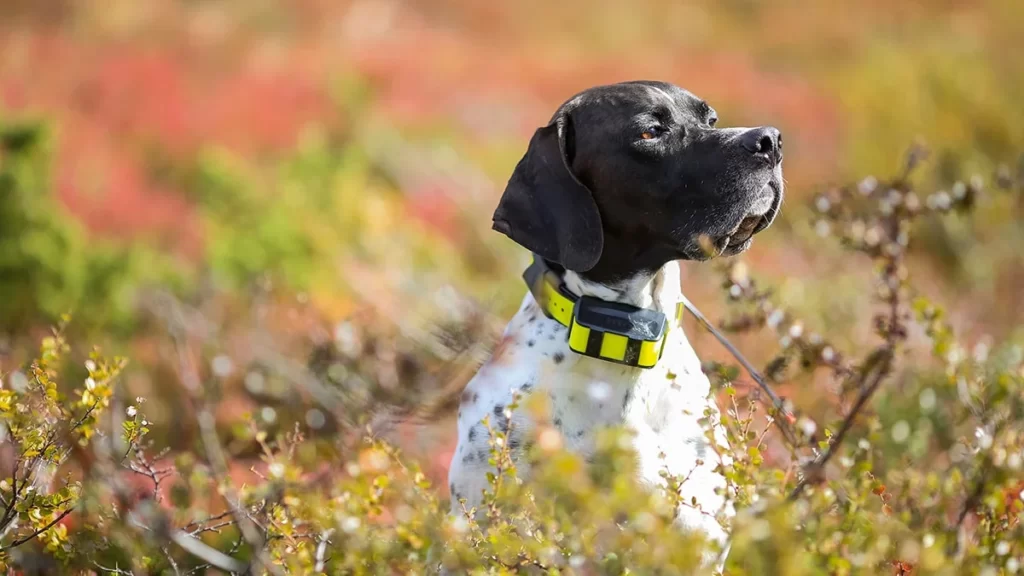Are you planning a trip and want to bring your furry friend along? Traveling with dog can be an exciting adventure, but it’s essential to ensure a stress-free journey for both you and your canine companion.
In this blog post, we’ll provide you with essential tips and guidance to make traveling with your dog a breeze.
From pre-trip preparations to in-transit comfort and safety measures, we’ll cover everything you need to know to ensure a smooth and enjoyable travel experience for you and your four-legged friend.
Get ready to embark on unforgettable adventures with your beloved pup by your side!
Table of Contents
- 1 1. Choose the Right Travel Method
- 2 2. Ensure Safety and Comfort
- 3 3. Prioritize Health and Vaccinations
- 4 4. Follow Travel Etiquette and Regulations
- 5 5. Maintain Routine and Exercise
- 6 6. Address Travel Anxiety and Motion Sickness
- 7 7. Be Prepared for Emergencies
- 8 8. Consider Accommodations and Destinations
- 9 Frequently Asked Questions
- 10 Conclusion
1. Choose the Right Travel Method
When traveling with your dog, it’s crucial to select the appropriate travel method to ensure their safety and comfort. Consider these tips for choosing the right travel method:
- Car: If you’re driving, use a secure crate or a pet seat belt harness to keep your dog restrained and minimize distractions. Make sure to plan for regular breaks for exercise, bathroom breaks, and water.
- Airplane: Check the airline’s pet policy and requirements before booking. Smaller dogs may be allowed in the cabin, while larger dogs might need to travel in the cargo hold. Follow all guidelines for crate size, ventilation, and labeling.
- Train: Some train companies allow dogs on board, but again, check their specific pet policies. Ensure your dog is well-behaved, leashed, and consider using a comfortable travel crate.
- Bus or Public Transportation: Verify if pets are allowed on public transport. Small dogs in carriers might be permitted, but larger dogs could be restricted.
Remember to pack essential supplies such as food, water, medication, and familiar items for your dog. Additionally, consult your veterinarian for any specific advice or requirements based on your dog’s breed, size, and health condition.
2. Ensure Safety and Comfort
When traveling with your dog, ensuring their safety and comfort is essential for a pleasant journey. Firstly, it’s crucial to secure your dog properly in the vehicle. Consider using a crate or a doggy seat belt to prevent them from roaming or getting injured in case of sudden stops. Keep the windows only partially open to avoid accidents or the dog sticking its head out. Additionally, never leave your dog unattended in a parked car, as temperatures can rise rapidly, leading to heatstroke.
To guarantee your dog’s comfort during the trip, pack their essentials. Bring their regular food, water, and feeding bowls, as well as any medications they may need. Don’t forget to carry waste bags for clean-up during rest stops. Make sure your furry friend has enough space to move around comfortably, whether it’s in a crate or a designated area in the vehicle.
Plan your travel breaks strategically to provide exercise and bathroom breaks for your dog. Find pet-friendly pit stops along your route where your dog can stretch their legs and relieve themselves. Remember to keep them on a leash during these breaks and clean up after them to maintain cleanliness and respect for others.
By prioritizing safety measures, packing the necessary items, and planning breaks, you can ensure a safe and comfortable journey for both you and your beloved canine companion.
3. Prioritize Health and Vaccinations
When traveling with your dog, prioritizing their health and ensuring they are up to date on vaccinations is crucial. Vaccinations protect your furry companion from contagious diseases and help maintain their well-being.
Before embarking on your journey, schedule a visit to the veterinarian. Ensure your dog’s vaccinations, including rabies, distemper, parvovirus, and others, are up to date. Depending on your destination, additional vaccinations may be required, such as those for Lyme disease or canine influenza.
While traveling, keep your dog’s health in mind. Provide them with access to fresh water and a balanced diet. Take regular breaks for exercise and bathroom breaks to prevent discomfort or accidents. Be mindful of any specific health risks in the areas you visit, such as ticks or mosquitos carrying diseases like heartworm or Lyme disease.
Remember, a healthy dog is a happy dog. By prioritizing health and vaccinations while traveling, you can ensure a safe and enjoyable experience for both you and your furry companion.
4. Follow Travel Etiquette and Regulations
When traveling with your dog, it is crucial to follow travel etiquette and regulations to ensure a smooth and enjoyable experience for everyone. Firstly, research and comply with the specific regulations of your destination regarding pet travel, including quarantine requirements, documentation, and pet-friendly accommodations.
Prioritize your dog’s comfort by packing essential items such as food, water, bedding, and toys. Be mindful of fellow travelers by keeping your dog leashed and under control at all times. Clean up after your dog promptly and dispose of waste responsibly.
Respect public spaces and accommodations by confirming their pet policies in advance and adhering to them. Be considerate of other travelers’ allergies or fears by keeping your dog away from those who may be uncomfortable around animals.
During flights or long drives, ensure your dog’s safety and well-being by providing proper ventilation, breaks for exercise and bathroom breaks, and appropriate restraining measures.
By following travel etiquette and regulations, you can create a positive experience for your furry companion and those around you, allowing for a hassle-free journey.
5. Maintain Routine and Exercise
When traveling with your dog, maintaining a routine and incorporating exercise are vital for their well-being. Start by sticking to a consistent schedule for meals, walks, and rest times. Dogs thrive on predictability, and this helps them feel more secure in unfamiliar surroundings. Pack their regular food, water, and bedding to provide a sense of familiarity.
Exercise is crucial to keep your dog happy and healthy during travel. Before embarking on your journey, research dog-friendly parks, trails, or off-leash areas in your destination. Engage in activities that suit your dog’s needs, whether it’s walking, hiking, swimming, or playing fetch. Regular exercise helps prevent restlessness, boredom, and excess energy, reducing the risk of behavioral issues.
While on the road, take regular breaks to allow your dog to stretch their legs, hydrate, and relieve themselves. Incorporate interactive toys or puzzles to keep them mentally stimulated during downtime.
Remember to adhere to local leash laws and respect the environment by cleaning up after your dog. Prioritizing your dog’s routine and exercise while traveling ensures a smoother experience and a happier, healthier companion by your side.
6. Address Travel Anxiety and Motion Sickness
Traveling with a dog can be an exciting experience, but it can also present challenges such as travel anxiety and motion sickness. To address these issues, there are several strategies you can employ.
Firstly, it’s important to acclimate your dog to the travel environment gradually. Start by taking short trips to familiarize them with the sensations of traveling. Use positive reinforcement techniques and reward your dog for calm behavior during the journeys.
To alleviate motion sickness, avoid feeding your dog a large meal before travel and provide small, light snacks instead. Ensure proper ventilation in the vehicle and consider using products like dog-specific motion sickness medication or natural remedies recommended by your veterinarian.
To reduce travel anxiety, create a comfortable and familiar environment for your dog. Bring their favorite blanket, toys, and treats to provide a sense of security. Additionally, engage in pre-travel exercise to help your dog burn off excess energy and promote relaxation.
Consulting with a veterinarian for guidance tailored to your dog’s specific needs is crucial. Remember, patience, preparation, and positive reinforcement are key to addressing travel anxiety and motion sickness while traveling with your dog.
7. Be Prepared for Emergencies
When traveling with your dog, it is crucial to be prepared for emergencies. Here are some essential tips to ensure your pet’s safety:
- Research: Prior to your trip, research veterinary clinics, emergency hospitals, and pet-friendly accommodations along your route and at your destination.
- Health Check: Visit your veterinarian for a thorough health check-up before traveling. Ensure your dog is up to date on vaccinations and has any necessary medications.
- Identification: Keep your dog’s identification tags up to date with your current contact information. Consider microchipping your pet as an added precaution.
- First Aid Kit: Pack a portable first aid kit specifically designed for pets. Include items such as bandages, antiseptic wipes, tweezers, and any necessary medications.
- Travel Documents: Carry copies of your dog’s medical records, vaccination certificates, and any necessary permits or licenses.
- Safe Restraint: Secure your dog properly while traveling to prevent injuries. Use a sturdy crate or a seat belt harness designed for pets.
- Emergency Contact: Save the contact information for your veterinarian and local emergency veterinary services in your phone.
By following these precautions, you can be prepared for any emergencies that may arise while traveling with your furry friend.
8. Consider Accommodations and Destinations
When traveling with your dog, it’s important to consider both accommodations and destinations. Firstly, when selecting accommodations, look for pet-friendly hotels, vacation rentals, or campsites that allow dogs. Check their pet policies, restrictions, and any additional fees. Ensure the accommodation provides a safe and comfortable environment for your furry friend.
Secondly, choose destinations that cater to dogs. Look for parks, beaches, and hiking trails that permit dogs on leashes. Research pet-friendly attractions, such as outdoor cafes or pet-friendly museums. Some cities even have dedicated dog parks or off-leash areas where your pup can socialize and play.
Remember to pack essential items like food, water, bowls, medication, toys, and bedding. Maintain your dog’s regular routine, including exercise and bathroom breaks. Use a sturdy leash and harness while exploring new places. Ensure your dog is up-to-date on vaccinations and carry necessary documents.
By considering accommodations and destinations that accommodate dogs, you can ensure a pleasant and enjoyable travel experience for both you and your furry companion.
Frequently Asked Questions
Embarking on a journey with your furry companion? Find answers to frequently asked questions below.
Q) How do I prepare my dog for travel?
Start by ensuring your dog is comfortable with car rides or being in a carrier. Gradually acclimate them to longer trips, providing positive reinforcement along the way. Take them on short practice drives before the actual journey.
Q) What should I pack for my dog when traveling?
Pack essentials such as food, water, bowls, leash, harness, waste bags, medication, vaccination records, a familiar blanket or bedding, toys, and grooming supplies. Don’t forget to bring a first aid kit for any unexpected situations.
Q) How can I keep my dog calm during the journey?
Create a comfortable and secure space for your dog in the car or carrier. Use calming aids like pheromone sprays, natural remedies, or approved medications (if necessary). Provide familiar items that carry their scent and engage them with interactive toys.
Q) How often should I take breaks during long drives?
Plan for frequent breaks every 2-3 hours to allow your dog to stretch their legs, relieve themselves, and stay hydrated. Research pet-friendly rest areas or parks along your route to make these stops more enjoyable.
Q) Can I fly with my dog?
Yes, many airlines allow dogs in the cabin or as cargo. However, each airline has specific regulations and restrictions. Contact your airline in advance to understand their policies and ensure your dog meets the necessary requirements.
Conclusion
Traveling with your dog can be a rewarding and memorable experience if you follow these essential tips. By planning ahead and considering accommodations that welcome pets, you’ll provide a safe and comfortable environment for your furry friend.
Choosing dog-friendly destinations and attractions ensures that your pup can join in on the fun. Packing necessary items and maintaining your dog’s routine will help them feel secure and at ease. Remember to prioritize your dog’s health by ensuring vaccinations are up to date and carrying necessary documents.
With these tips in mind, you can embark on a stress-free journey with your canine companion, creating cherished memories that will last a lifetime. Happy travels!




